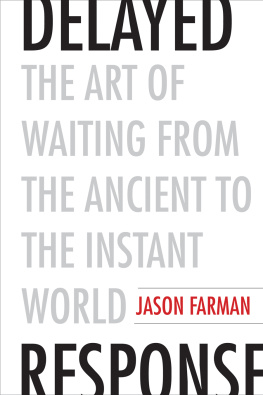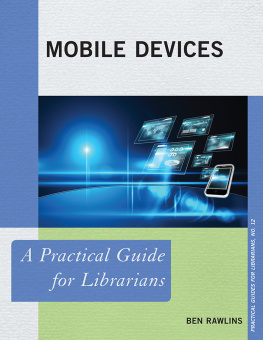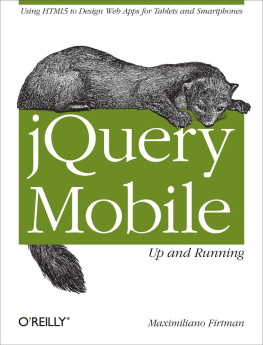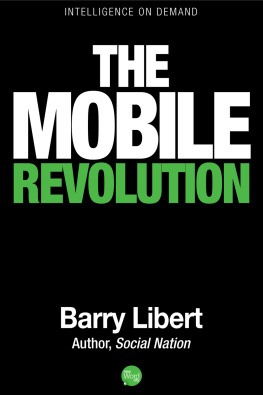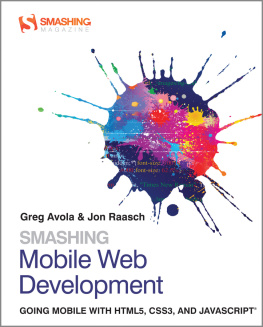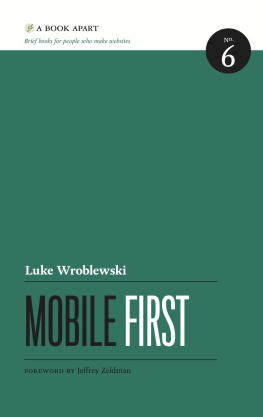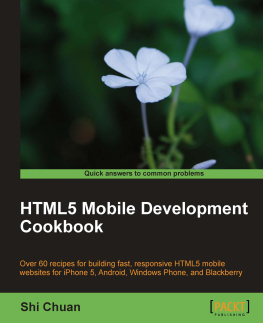
MOBILE INTERFACE THEORY
Mobile mediafrom mobile phones to smartphones to netbooksare transforming our daily lives. We communicate, we locate, we network, we play, and much more using our mobile devices. In Mobile Interface Theory, Jason Farman demonstrates how the worldwide adoption of mobile technologies is causing a reexamination of the core ideas about what it means to live our everyday lives. He argues that mobile media's pervasive computing model, which allows users to connect and interact with the internet while moving across a wide variety of locations, has produced a new sense of self among usersa new embodied identity that stems from virtual space and material space regularly enhancing, cooperating, or disrupting each other. Exploring a range of mobile media practices, including mobile maps and GPS technologies, location-aware social networks, urban and alternate reality games that use mobile devices, performance art, and storytelling projects, Farman illustrates how mobile technologies are changing the ways we produce lived, embodied spaces.
Jason Farman is an Assistant Professor at the University of Maryland, College Park in the Department of American Studies and a Distinguished Faculty Fellow in the Digital Cultures and Creativity Program. He received his Ph.D. in Performance Studies and Digital Media from the University of California, Los Angeles. Farman's research focuses on embodied space in the digital age, including studies of mobile media, mapping technologies, videogames, digital storytelling, social media, digital performance art, and surveillance.
MOBILE INTERFACE
THEORY
Embodied Space
and Locative Media
Jason Farman
First published 2012
by Routledge
711 Third Avenue, New York, NY 10017
Simultaneously published in the UK
by Routledge
2 Park Square, Milton Park, Abingdon, Oxon OX14 4RN
Routledge is an imprint of the Taylor & Francis Group, an informa business
2012 Taylor & Francis
The right of Jason Farman to be identified as author of this work has been asserted by him in accordance with sections 77 and 78 of the Copyright, Designs and Patents Act 1988.
All rights reserved. No part of this book may be reprinted or reproduced or utilized in any form or by any electronic, mechanical, or other means, now known or hereafter invented, including photocopying and recording, or in any information storage or retrieval system, without permission in writing from the publishers.
Trademark notice: Product or corporate names may be trademarks or registered trademarks, and are used only for identification and explanation without intent to infringe.
Library of Congress Cataloging in Publication Data
Farman, Jason.
Mobile interface theory : embodied space and locative media / Jason
Farman.
p. cm.
Includes bibliographical references and index.
1. Mobile computing. 2. Location-based services. 3. Telecommunication
Social aspects. I. Title.
QA76.59.F37 2011
004dc23
2011025034
ISBN: 9780415878906 (hbk)
ISBN: 9780415878913 (pbk)
ISBN: 9780203847664 (ebk)
Typeset in Bembo
by Keystroke, Station Road, Codsall, Wolverhampton
Printed and bound in the United States of America on acid-free paper
by Walsworth Publishing Company, Marceline, MO
For Susan
ACKNOWLEDGMENTS
I find that I am at my best when I am working collaboratively. The process of writing this book looked less like me sitting in my office typing alone and looked more like conversations over dinner, cups of coffee, and around conference tables. Many people helped me work through the ideas in this book and, without them, this work would never have been complete. I want to thank the faculty who worked closely with the very early versions of this project: Sue-Ellen Case, Mark Poster, and N. Katherine Hayles. As this project evolved over time, Katherine Hayles offered a generous amount of time and input as I worked through my theory of the sensory-inscribed body that is developed in . The overall outline of this book began as a very short talk I gave at Washington State University as part of a Digital Humanities Colloquium put together by Julie Meloni and Chris Ritter. The details began to take shape in my conversations with Dene Grigar and John Barber. Many of my other colleagues at WSU helped me through early stages of this book, especially Doug Gast, Leonard Orr, Patricia Ericsson, Kristin Arola, John Hegglund, Todd Butler, and Victor Villanueva. Much of the work in this book took shape in conversations I had with my graduate students in my seminars Embodiment and Space in the Digital Age and Electronic Literature, Gaming, and Cyberculture. My undergraduates in the Digital Technology and Culture Program helped me study the work of mobile media first hand and their insights into the practices of mobile technologies were invaluable. Before I left Washington State for the University of Maryland, about half of this book was written in Barracuda Coffee Shop with the philosopher Joshua Wretzel sitting next to me, allowing me to constantly test out my approaches to phenomenology and poststructuralism.
After moving to the University of Maryland, I was deeply appreciative of the time and insights offered by Matthew Kirschenbaum, who reviewed several of the chapters as they developed. Im thankful also to my colleagues at UMD who offered input at various times on specific aspects of this project: Kari Krauss, Tita Chico, the Critical Theory Colloquium, everyone at the Maryland Institute of Technology in the Humanities ( was first presented as a MITH Digital Dialogue), my graduate students in American Studies, Hasan Elahi, Tara Rodgers, and Katie King. I am especially grateful to my colleagues in the Department of American Studies, who have been supportive of my work and went out of their way to make accommodation for me to take a semester leave to complete this project.
I want to thank the artists and designers who were kind enough to provide me with images for use in this book: William Pike, Paula Levine, Chris Jordan, Jason Travis, the Murmur team, Paul Notzold, Christian Nold, Pranav Mistry, Frank Lantz, Jeremy Hight, Mark Burbidge, the Museum of London, and Blast Theory.
Many others gave generously of their time to offer me wonderful insights and guidance. Adriana de Souza e Silva has gone above and beyond in this regard, and I am truly appreciative. Colin Johnson read through the entire final manuscript and offered fantastic advice.
I also want to individually thank those who read through a chapter (or chapters) or allowed me to bounce ideas around with them. I am grateful for their feedback and editing advice: Jordan Frith, Rita Raley, Harmony Bench, Gabriella Giannachi, Lone Koefoed Hansen, Pam Chisum, Tim Hetland, Ben Anderson, Toria Johnson, Chris Salter, Maria X, and Simon Ellis. I also want to thank my editors at Routledge, Matthew Byrne and Erica Wetter, for their constant belief in this project, their hard work to see it through to the end, and their guidance throughout the process.


